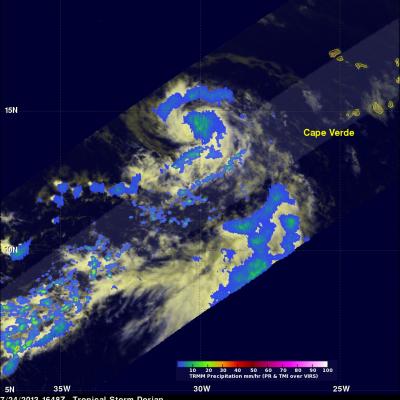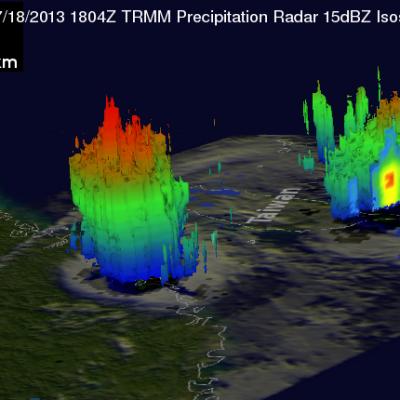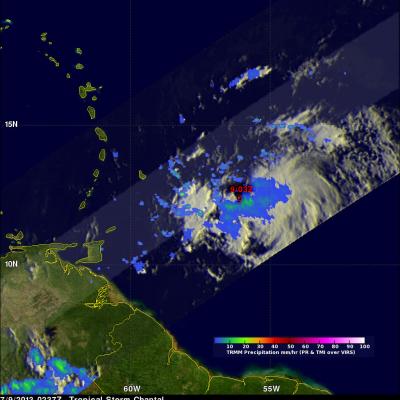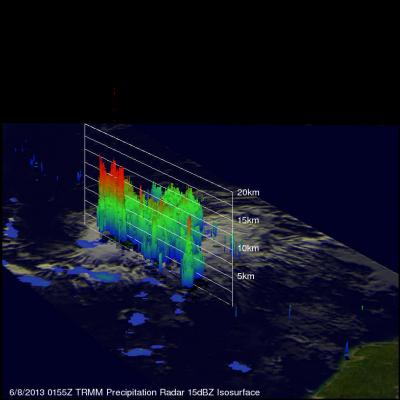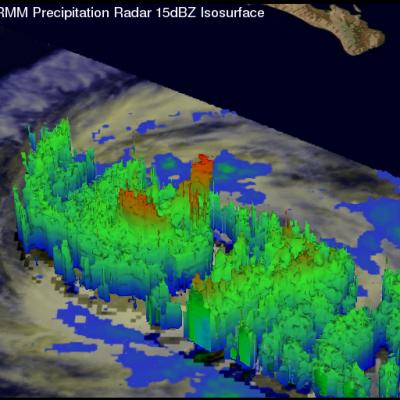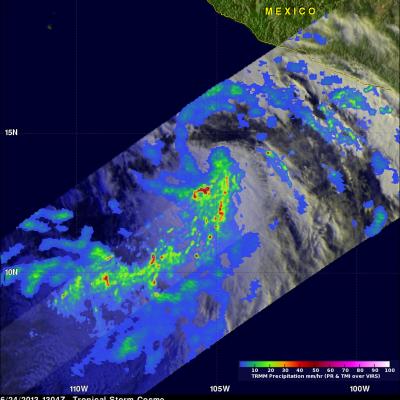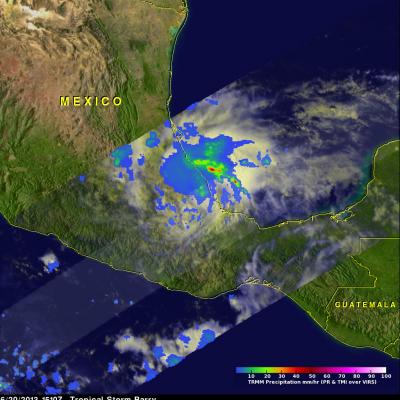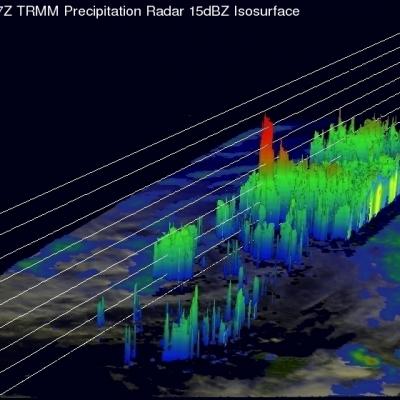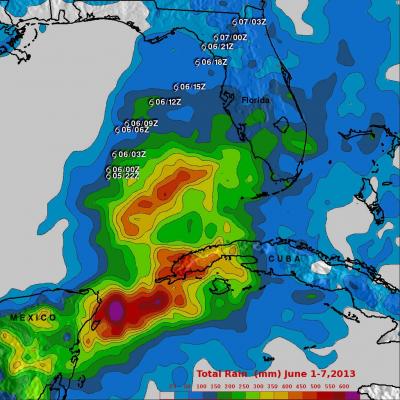TRMM Sees Weak Tropical Storm Dorian
The TRMM satellite flew over tropical storm Dorian on July 24, 2013 at 1648 UTC providing data used in this image. Only light to moderate rainfall was found near Dorian's center of circulation by TRMM's Microwave Imager (TMI) and Precipitation Radar (PR) instruments. Precipitation is shown overlaid on a visible/infrared image from TRMM's Visible and InfraRed Scanner (VIRS).


